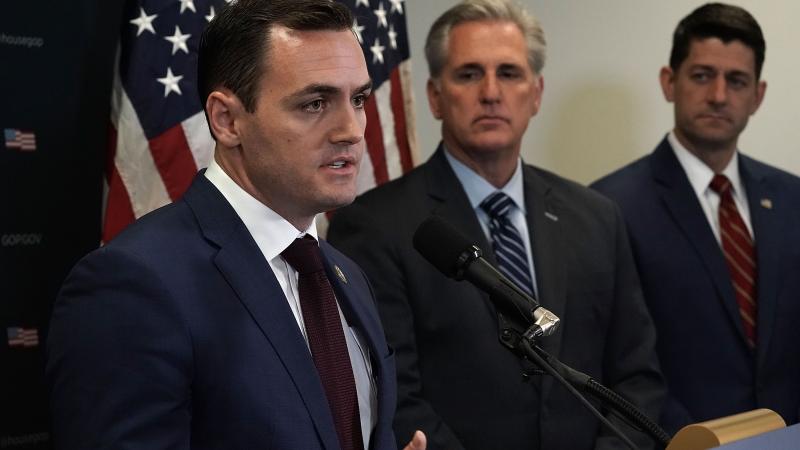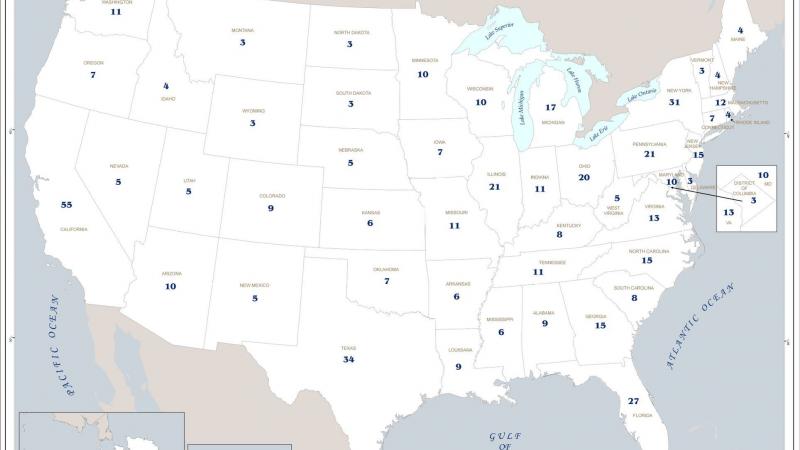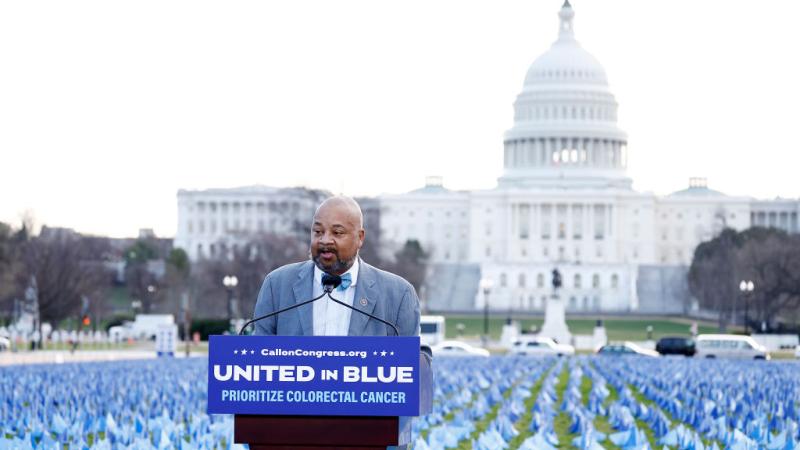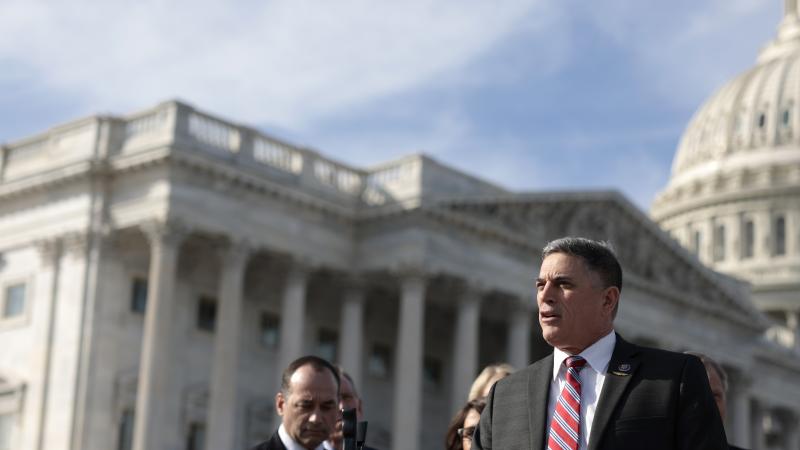Fauci offers more conservative death rate in academic article than in public virus briefings
In New England Journal of Medicine, nation's infectious disease chief suggests COVID-19 mortality rate may end like bad seasonal flu.
You’ve probably heard that COVID-19 is far deadlier than the flu. But it could turn out to be more akin to a severe flu season. Surprisingly, both of those assessments come from the same authority at the same time: Dr. Anthony Fauci, the nation's chief infectious disease specialist.
Fauci, the director of the National Institute of Allergy and Infectious Diseases, has repeatedly cited more jarring figures in public. For instance, Fauci declared in March 11 congressional testimony that the current coronavirus “is 10 times more lethal than the seasonal flu,” which would be about 1 percent. His testimony generated news headlines that blared across the internet and television news, and it remains frequently cited today.
But among his learned colleagues in academia, he has provided the more conservative analysis.
“[T]he case fatality rate may be considerably less than 1%,” Fauci wrote in an article published in the New England Journal of Medicine on March 26. “This suggests that the overall clinical consequences of COVID-19 may ultimately be more akin to those of a severe seasonal influenza (which has a case fatality rate of approximately 0.1%) or a pandemic influenza (similar to those in 1957 and 1968) rather than a disease similar to SARS or MERS, which have had case fatality rates of 9 to 10% and 36%, respectively.”
A day after the NEJM article was published, Fauci was back to repeating the higher fatality number in public rather than “considerably less than 1%.”
“The mortality of [COVID-19] is about 10 times [flu],” Fauci told Comedy Central host Trevor Noah on March 27.
Fauci was not available to answer questions when Just the News contacted him, his office said. A source familiar with the background of the NEJM article says it was written many weeks ago and was attempting to convey that coronavirus mortality appears to be closer to that of a severe flu season than the earlier coronavirus outbreaks known Sudden Acute Respiratory Syndrome (SARS) or Middle East Respiratory Syndrome, (MERS).
But the seemingly different assessments draw attention to the inexact nature of scientific projections, and difficulties inherent in quantifying the unknown. They also heighten suggestions from other scientists who say the most widely-publicized death rates are being incorrectly calculated, and that early predictions about coronavirus mortality could turn out to be too high.
Reporting accurately on simple but important scientific facts can be fraught with peril in today’s charged media environment. Those who make cataclysmic-sounding projections are accused of being alarmist. Those who point to the possibility of lesser risks get attacked for downplaying or doubting coronavirus. Rarely is the public provided a range of possibilities with clear explanations.
A lower-than-advertised coronavirus fatality rate would not mean concern is misplaced. Since there is no vaccine for coronavirus, experts say it could end up infecting a much larger proportion of the population than the flu typically does. Stated plainly: even if the rate at which Covid-19 kills is not substantially different than flu, coronavirus could reach more of the population and, therefore, kill more people than seasonal flu.
But the wildly divergent death rates have huge implications. They are the difference, for example, between 200,000 deaths and two million.
Calculating the death rate for a disease is mathematically simple, requiring 4th or 5th grade skills. Take the number of deaths (numerator) divided by the whole group (denominator). But officials have routinely made what some scientists see as an error in defining “the whole group.” They use the relatively small number of sick patients testing positive.
In fact, the way to figure an accurate death rate is to use the much larger number of people who have coronavirus, including the majority with mild symptoms or no symptoms at all, who are never diagnosed or even tested.
Many in the media have made the mistake of reporting that coronavirus mortality “is a moving target” or is “falling.” In fact, scientists say coronavirus mortality in a given region of the world isn’t changing. The number being reported is merely inching closer to becoming more accurate as cases are added to the denominator.
What difference does it make? By way of hypothetical example, if 10 sick people have coronavirus and one of them dies, the first method produces a fatality rate of 10%. But if you factor in 90 others who had coronavirus, but were neither tested nor diagnosed, the fatality rate becomes much smaller: 1%.
“The true fatality rate is the portion of those infected who die, not the deaths from identified positive cases,” says Dr. Jay Bhattacharya, professor of medicine at Stanford University in California.
Bhattacharya and his colleagues worked out the math in an opinion article recently published in The Wall Street Journal. The true number of infections is likely orders of magnitude more than confirmed cases, they say. "Epidemiological modelers haven’t adequately adapted their estimates to account for these factors,” they wrote.
“Since Italy’s case fatality rate of 8% is estimated using the confirmed cases, the real fatality rate could in fact be closer to 0.06%,” they write. That estimate is a remarkable departure from Italy’s widely-publicized figures.
Bhattacharya hypothesizes that COVID-19 is likely about as lethal as a typical flu, but more deadly for older patients and those with chronic health conditions. “We need to know the number of people who have been infected (including those who have recovered) before we can figure out whether that hypothesis is correct,” Bhattacharya explained.
Bhattacharya is part of a group of scientists launching a new, landmark study this week to answer that question. They plan to begin by using a new coronavirus antibody test to sample 5,000 people grocery shopping from geographically representative samples around Santa Clara county.
Such studies aim to yield the most accurate fatality rate so far. Even more important, perhaps, we will learn who has gotten coronavirus and fought it off, but never knew it. These people could go about their business in the nation because they would have antibodies theoretically protecting them from a recurrence, and would be of no danger to those who have not had coronavirus.
“Everything up until this point is just a guess,” Dr. Bhattacharya told Just the News. “I think it is unlikely that the case fatality rate is 10 times more deadly than the flu."
















